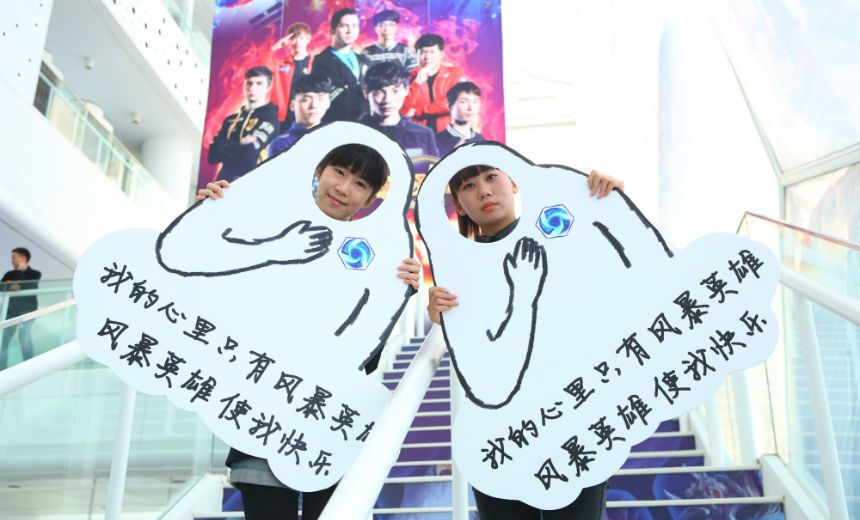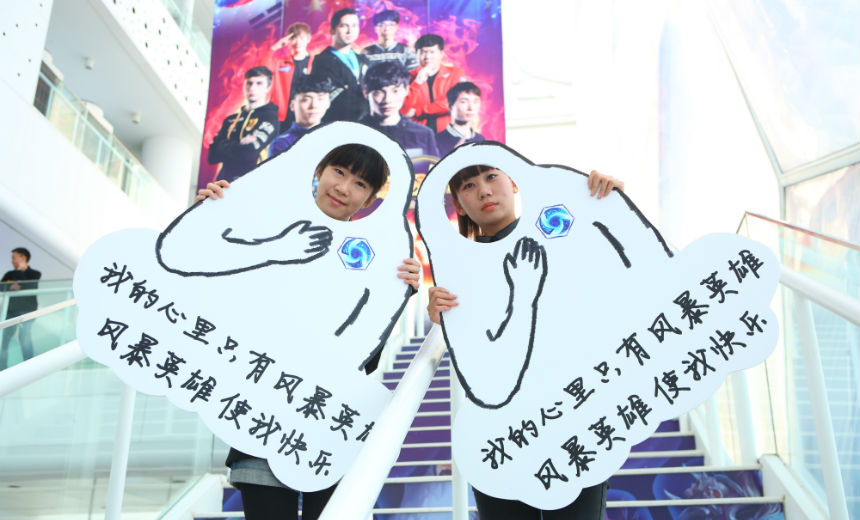
The right crowd
There was something electric about watching Heroes of the Storm when surrounded by Chinese fans. Each person seemed on the edge of their seats and when the smallest of plays happened, it shook the room.
This isn't to say that hype at a Heroes event is anything new, but it was different type at the Gold Club World Championship. Maybe it was the elite esports nature of the event. Maybe it was because that you had to pay to attend and the venue was famous. Whatever it was, it resulted in a crowd of hardcore fans that seemed to hang on every moment of gameplay, no matter how nuanced.
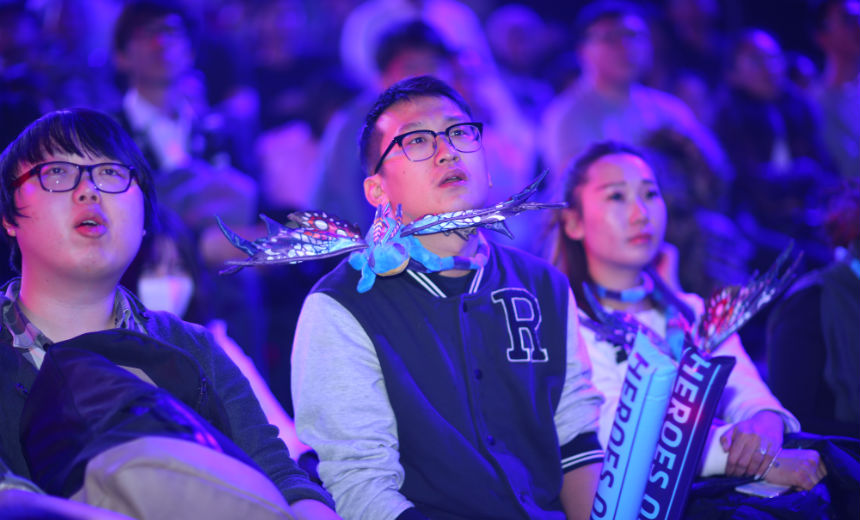
The crowd was electric. Each person seemed at the edge of their seat and was completely moved by every kill or big play that happened to, or against, their home team. There was one moment when Rich, the MVP Black player known for his mechanic skill, was playing Zeratul and it felt like something out of the movie Jaws.
Every time he would stalk near an enemy hero or go in for a flank, the room would start to swell into one universal sound of rising tension. The closer Zeratul came to engaging on a hero, the louder they got:
"oooooooooooOOOOOOOOOHHHHHHHHH!"
It was all so passionate. The crowd seemed like an echo chamber of emotions for what was happening on stream. When a player did something cheeky, the crowd would laugh as if on cue. This didn't happen for just obvious b-steps either. There was one moment where Rich (again on Zeratul) escaped a dicey situation by capturing 4 Heroes in Void Prison and then mounted away. It wasn't a huge VP that won a team fight, nor was it something that the commentators artificially hyped up. It was just a somewhat silly moment that everyone in the room immediately recognized and laughed about.
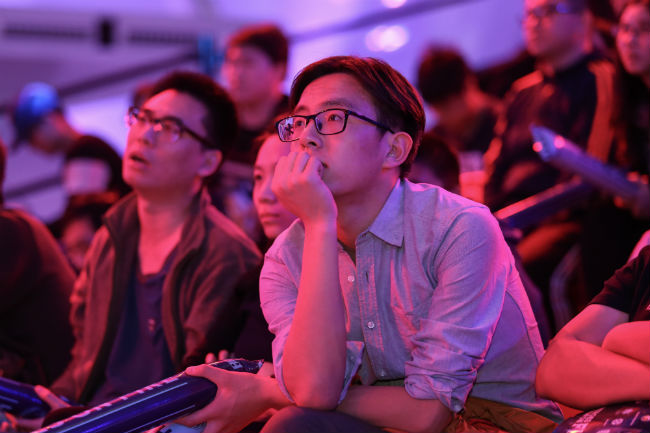
I couldn't understand the language, but an esports nut can recognize a strategy debate anywhere. It seemed like every section of the audience had at least 2 or 3 pockets of friends all huddled together, eyes never leaving the screen as they spoke rapidly. I could make out the occasional hero name and never felt closer to a group of strangers all brought together by a love of competitive Heroes of the Storm.
Eastern events make it easy to be a fan of Heroes of the Storm. Western Events assume you already are one.
Sometimes it felt like more than just fandom. It felt like sincere respect and admiration. There was one particular moment in a match between Super Perfect Team and MVP Black on Battlefield of Eternity that immediately comes to mind. It was nearly 2 minutes of solid positioning and patience that resulted in SPT taking an Immortal they had no business taking.
How did the crowd react? With a round of polite golf clapping and head nodding. The crowd themselves recognized the discipline and zoning precision such a feat took, despite there being no obvious haymaker plays to cause hype. There was so much respect for each team, the crowd even applauded as the teams left the stage after a match, separately for the winner and the loser.
I've never seen that happen in the West and I think I know why.
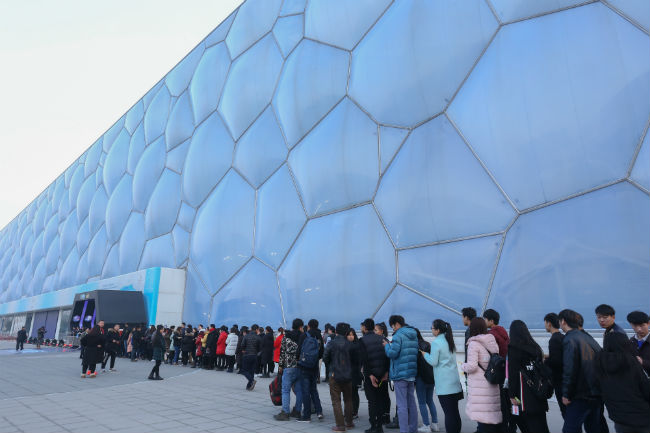
The line to get into the venue early.
Why so hype?
All of this caused me to asked the knee-jerk question to myself throughout the event: "Why don't Heroes tournaments feel like this in the West?"
At first, I chalked it up to fan dedication and excitement for the game as an esport, but that answer is too easy and likely not true. Western Heroes viewers are just as fanatic about the game (anyone who has been to BlizzCon or Heroes of the Dorm can tell you that), but I was struck with an idea that I now hold today as a truth.
Eastern events encourage you to become a fan. Western Events assume you already are one.
Everything about this event pulled you into the world of Heroes esports fandom. Whether it was walking through the main gate with the team logos surrounding you, the massive banner showcasing the players faces, or the team guide each viewer was handed at the door, every step took you deeper into the world of competitive heroes.
The entire event felt like a Heroes of the Storm victory lap, representing the highest level of play and fan appeal possible.
The player pamphlet alone was a clever bit of marketing that really sold the concept of these players as athletes worthy of respect and fandom. Something as simple as a physical way to see each player, name, and team made it so much easier to recognize a player at the venue, ask them for a photo, or even just remember who it is you are rooting for.
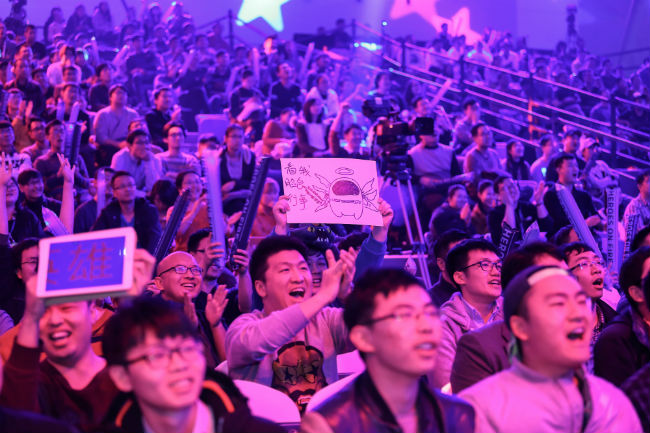
In general, it seems as if the Eastern Heroes scene has navigated the murky waters of "How do we market Heroes esports?" by focusing on the players and their personalities. Behind the scenes footage in between matches and an overall goal of differentiating the teams and players from one another through the use of graphs, statistics, and well-studied commentators (hats off to Dreadnaught, Wolf, Grubby and DunkTrain) really created a narrative for fans to follow.
The Venue
When you walked into the arena, the walls were surrounded by photos and logos of the eight teams competing. It felt like some Olympian hall of heroes-- hallowed grounds that I was lucky to be stepping into. That long hallway led down to a table with tons of friendly staff handing out goodie bags filled with Heroes swag and exclusive mount codes. This was for every person that purchased a ticket. There was even a VIP ticket that included the same goodiebag, but with even more merch in it.
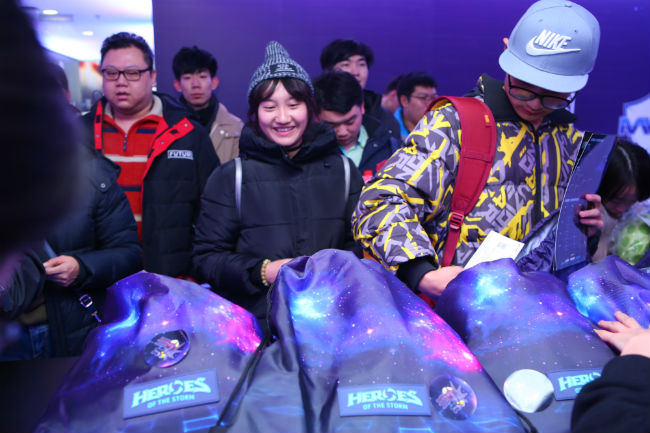
One thing that surprised me was just how many Gold League staff there were. The venue was so well staffed that nearly everywhere you went was a guiding hand, a helpful face, or some sort of friendly person making sure you knew where to go. There were even people whose job it was to make sure everyone found a seat, pacing up and down the aisles and helping people secure their assigned seats by checking their tickets.
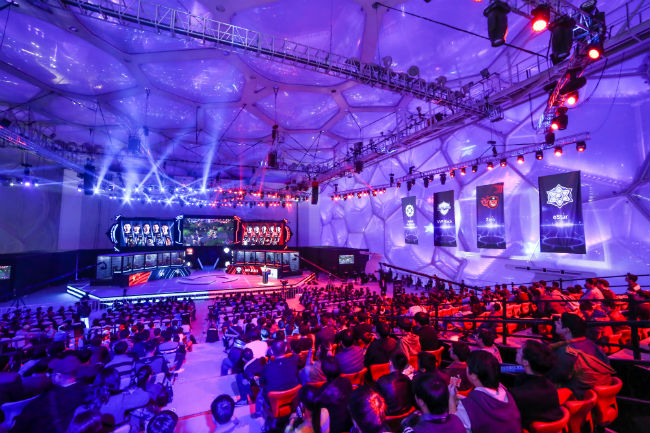
I don't want to ramble on, but I can't over exaggerate just how Heroes-themed the venue was. The walls were covered in Heroes flair. The lining of the staircases was outlined with Heroes imagery. There were team logos everywhere and the hanging team flags in the stadium was a master touch of hype. All of this served to give the teams an identity and prestige that elevated the entire event.
...no one has ever approached me with a level of persistence regarding how they could make their event better.
Even the Monkey King Samuro reveal was surprisingly intense. MilkFat did an incredible job showcasing all that Heroes had accomplished and his sharp dress and authentic hype really struck a chord. These type of Blizzard specific callouts to the Chinese Heroes community help unify their fans and, once more, make it easy to love Heroes. The entire event felt like a Heroes of the Storm victory lap, representing the highest level of play and fan appeal possible.
A culture of hope
There were two positive Chinese memes that I learned about during this tournament.
One was the phrase "Heroes on Fire". Apparently, this is a popular phrase in China and it can be used to hype up... well anything:
"Coffee on Fire!"
"Gazlowe on Fire!"
"Public transportation on Fire!"
It means that something is growing rapidly. The western term for it is probably close to when something goes "viral". Like a flame, it spreads and engulfs everything with a blazing fury and speed. In China, this is the self-fulfilling prophecy that Chinese tournament organizers, teams, and fans shout and chant at every possibility. That their beloved game, Heroes of the Storm, is on fire.
The 2nd meme is, of course, this guy:
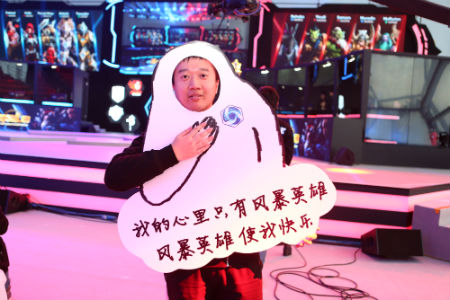
Not the guy wearing the cut out, but the simple sentiment of almost ludicrous devotion to a video game.
"I love Heroes and I only have Heroes in my heart"
What can we infer from the Chinese heroes community when this is their most popular Heroes meme? I'm sure they have their own variant of "Lagf" or "Daed Game", but does the West have our version of this positive call to arms?
Chinese Heroes fans love the game, and that seems to be the only thing they care about. It's no secret that Chinese Heroes teams have been dwindling in 2016 and the massive popularity of Overwatch leaves Heroes as the awkward little brother just trying to find a place it belongs.
But rather than fight that, the Chinese community seems to have accepted it as their strength. With a humble sense of pride, I saw nothing but an absolute love of the game at the GCWC. This feeling was everywhere, all the way down to the tournament organizers.
Perfection or bust
The staff at Netease and Blizzard China were constantly asking me for how they could improve and what was bad about the tournament. I've been to nearly every major Heroes tournament (excluding the incredible South Korean championships) and no one has ever approached me with a level of persistence (that bordered on nagging) regarding how they could make their event better.
Well, here is where I indulge them. It's clear they won't stop until they have orchestrated the best Heroes tournament in existence, so here are the things that I think they can still improve on:
- Giveaways between matches to the crowd is a great way to keep people in their seats and reward players for showing up to the event live. The goody bags and the amazing venue was enough motivation to show up, but there could have been even more.
- Each team had access to their own private room, which was great. However, these rooms were too far away from the main stage. It needs to be closer to encourage the teams to actually use them.
- The casting duos could have been switched up. While the pairings were already excellent, it cost nothing and provides both the casters and the audience with some much-needed variety.
- Have an area where teams can sit and give autographs/take photos. Every time I saw a team move as one or travel to their seats, there were a group of fans wanting photos or autographs but not feeling bold enough to interrupt them. There is so much downtime for teams between matches, I think a 20-minute signing and photo period that is highly visible is something the teams would enjoy doing and it would benefit the fans greatly. For Heroes to truly stay on fire, it needs to be as easy as possible to become fans of teams and their players.
- The VIP tickets were an awesome idea and showed how much fans love Heroes swag at the event. If there was a booth selling team merchandise, flags, or jerseys, I have no doubt that people would buy them and wear them. Hell, I would personally buy and wear a Noblesse Ballistix jersey.
- Here is where every tournament can learn from Heroes of the Dorm. Fans at random were handed cardboard cut outs of different heroes' enlarged faces so show off and cheer with during the broadcast. It was incredibly hype whenever a hero made a big play because the camera could cut to a cheering section of people going nuts with a Rehgar or Jaina head.
It costs very little and makes the broadcast really come alive.
A Western alternative
Is there a similar market in the West for this caliber of event? I can only assume that the tournament pulled some sort of profit, as each seat for each day represented a ticket being sold. I was even told that, in China, the stream had massive viewing numbers, as well.
If this type of event was in North America, would people make the trip to attend it? I have a feeling they would. It was a sincerely fun time and the only way it would have been more enjoyable was if I could have understood what everyone was saying and it was in my own country.

People love competitive Heroes of the Storm because of its gameplay, but most of us stay because we are invested in a larger narrative. We are invested in the back-and-forth rivalry between Fnatic and Dignitas. We are invested in the ever-shifting North American scene or the incredible potential of ZeroPanda and other Chinese teams. We want to know if MVP Black will ever dominate Korea again, or whether or not Ballistix simply has them beat.
Pro teams are the heart and soul of Heroes esports and I think it's time that tournament organizers start really selling that idea. I want to see more photo ops, more behind the scenes footage, and more initiatives that put a face to the amazing level of skill fans see on display. I think the GCWC did an amazing job at this and offers a hint at a future where people might pay $30+ dollars a month for a subscription of highly organized, well-produced Blizzard esports events.
This is how the titans of media like ESPN and the NFL make the majority of their money-- people wanting to watch and cheer on something they are seriously invested in. Blizzard has made it clear that 2017 is the year of massive esports expansion, and in order for that to happen, tournament organizers and producers need to rise to the challenge and create more fan-centric events like the GCWC.
I know I would attend them. Would you?
Follow us on Twitter @GosuGamersHotS and on Facebook for more competitive Heroes of the Storm news and coverage from around the world.

